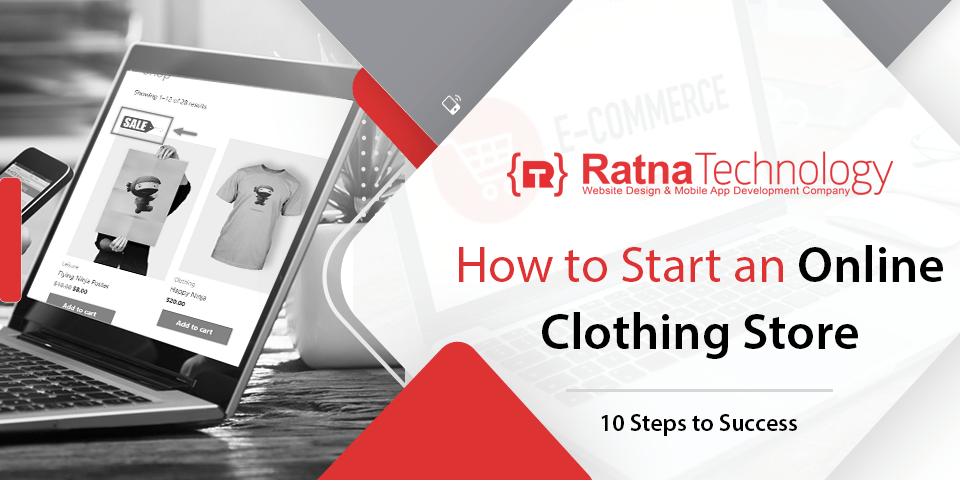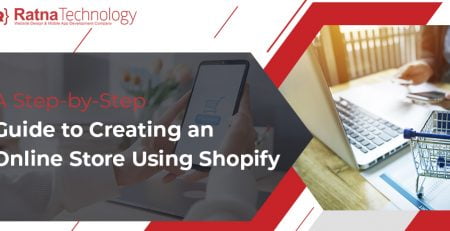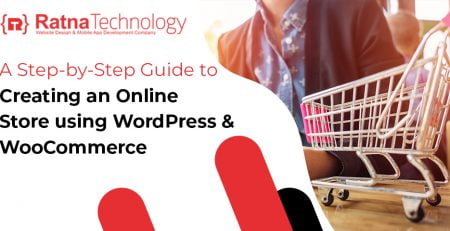How to Start an Online Clothing Store | 10 Steps to Success
Ecommerce website development is revolutionizing the entire shopping landscape of the modern times. When it comes to starting an online clothing store, you must look upon a top-notch ecommerce solution. You can simply do it with an easy to use online store builder.
Do you think it is a daunting task? Stop thinking. We can make it simple for you. Let’s follow the simple steps below.
1. Test & choose your online store builder
To set up your own online clothing store, you need to first choose an online site builder based on your requirements. There are various options before you. You can create an online store using Shopify with ease.
The online store builders enable you to start selling digitally for a little amount you’d pay for your T-shirt. You just need to register to an ecommerce plan to integrate the payment processors, letting you accept payments from customers once you start selling clothes online.
These online store builders are not only easy and economical to use but also take care of all the technical stuff that you cannot do. You can start selling clothes online right off the bat without worrying about security upgrades and hacking risks.
They also give SSL certificates that offer secure, encrypted communications between your website and the internet browser of your customers. It means all your credit/debit card details and data transfers are safe and secure.
You might be confused with picking up the right store builder for you. Let’s have a look at some popular online store builders mentioned below.
- Shopify – It’s best especially for larger stores.
- Wix – This is considered the best overall online store builder.
- Squarespace – It is typically most-suited for brand-focused stores.
- BigCommerce – This is undoubtedly best for multichannel selling.
2. Decide your favourite plan
When you are ready to spend more, the possibility of getting more features in premium plans of online store builders is high. You can also get more storage and access to more templates with price. Here storage refers to the size of your website data that include texts, images, videos and more.
Extra storage is required to expand your product range, increase the number of angles your customers become able to view products from or include product videos. Hosting more products and showing them off in various ways will result in overall sales growth.
With access to more templates, you can select one that really fits the tone, style and character of your online clothing brand. A premium plan allows you to use your own logo instead of the builder’s and connect a custom domain name to truly provide your online store its own, unique personality.
Your online store address will change to www.Myclothstore.com from www.myclothstore.shopify.com. The custom domain name makes your online clothing store look more professional and reputable. This will also help increase sales by building trust around your brand.
Finally you take your decision on how much you can pay monthly. You need to compare each builder’s plans and choose what fits your needs. Apart from cost, the following features need to be considered while picking up one.
Premium Support – If you get stuck while creating your online store, you must make sure that you have the best support in hand. Bigcommerce, Wix and Shopify offer premium customer support systems as they all ensure support over email, live chat and phone.
Abandoned Cart Recovery – When one customer makes all the way through to buy but doesn’t complete the purchase process, the abandoned cart recovery sends an email to the person to complete his/her order. It’s completely automatic; you don’t have to do anything. This feature really helps to bolster your bottom line.
SSL Certificate – As stated earlier, SSL safeguards all the data that is exchanged through your site. It’s much like a security guard of one’s physical store that offers high grade security to both online stores and their customers.
3. Pick a suitable domain name
If you are really wishing to offer a professional touch to your virtual fashion clothing store, a custom domain name is sought first. Always try to give your online store a professional touch. The more professional your store looks, the more likely people show interest in purchasing products from it.
A unique domain name sets an identity for your online clothing store. You can take the example of Myntra.com and AJIO.com. To book a domain name of your choice, you can have it either through your store builder or other domain registrars like GoDaddy and Domain.com.
You must be wondering about the best option for you. Picking up a domain name through your selected builder might be easier in the short run; however it will be complex in case you want to leave that builder.
Getting one through a third party might be a lengthy process but it is much more versatile than the other option.
If you don’t have a company name yet for your virtual clothing store, picking up a domain name looks tricky here. Thus it is recommended to think of a company name first. Then it would be easier for you to choose the domain name – it automatically comes to your mind.
Selecting a domain name can be tricky if you don’t yet have a company name for your online clothing store. First think of a company name and your domain name will evolve naturally from there.
Make sure your domain name looks catchy, neither too short nor too lengthy. It is not wiser to make this similar to a major brand. The name must be something that reflects your products or the ethos of your brand.
4. Go for a template
Today you can build your own online clothing store in a matter of seconds with the use of a professionally designed template of any builder without learning the foreign language of code.
A template determines the look and feel of an online clothing store, therefore taking the right decision is necessary. Needless to say, you are free to customize your preferred theme based on your store’s design.
If you are not sure about which template you need to use, we recommend testing out a few at least before finalizing it. While choosing a template, keep your target audience in mind. If you cannot figure out your possible customers, you can ask the below questions to yourself.
- What’s their age?
- What’s their profession?
- What’s their income cap?
- What’s their lifestyle?
When you can assume your target audience, then it becomes easy for you to choose your template. Most online store builders offer lucrative deals on their templates. You can take advantage of it.
Squarespace is hands down the leading online store builder for design with about a hundred of beautiful, professionally-designed ecommerce templates to make your online clothing store products shine.
5. Customize your template
To really personalize an online clothing store, template customization is inevitable. Of course, this is super easy to do even if you lack a bit of coding knowledge.
Your customization might include:
- Adding new pages e.g. product pages
- Adding a blog where you can publish news pieces or updates
- Modifying the color palette and background image of the template
- Updating different elements on each page
- Changing the color, size and font of different sections of the online clothing store
- Integrating your social media feeds with the store
Certainly, the interfaces of the online store builders are designed in such a way that they become very intuitive and easy to use. Here too, you need to think about your target audience. You must respect the choice of the recent trend to win.
Do not forget to check out how it looks on mobile and tablet devices while customizing your template. You know very well that more traffic, over 50%, comes to a website through mobile devices than desktop. So having an online clothing store that looks good on mobile is a must.
6. Add products to your online clothing store
While the homepage of a website functions as the digital equivalent to a brick and mortar storefront, the product pages are like the online type of the shop floor.
Adding up products might not be simple for you. Different store builders have different ways to add products. On Shopify, you can simply do this by clicking on the blue ‘Add product’ button available on the top right hand side.
Never make your customers too busy with varied options. You should ensure that customers can find quickly and easily what they need. Anything else is absolutely considered bad design.
Here also we recommend you to ask yourself a question that could germinate ideas within you to sell your merchandise online – Who do my customers presently buy from?
After that you need to visit each one and look at their products, and get ideas how they attract and entice customers.
Things to keep an eye out for when looking at the product pages of your competitors include:
- Are their products displayed in list or grid format?
- How many products does each page contain?
- How are their products grouped?
- Are you able to sort products by bestselling, price, featured?
- Can you filter products by brand, color, material?
Think of it like seeing a passerby wearing a really great outfit. You might be inspired and want to try and replicate it.
7. Set up a payment processor
Setting up the payment becomes crucial for any business operated online. If you are desperate to add the payment method to your online clothing store, keep your nerve control. We can help you there.
Integrating a payment processor to your online store is necessary to start making money from your cloth sale business digitally. Payment processors are the services that let you take credit card payments from your customers.
In Shopify, you can find the built-in functionality ‘Shopify Payments’ in conjunction with Stripe. This feature allows you to manage your payments directly in the user dashboard. That means you can track your money in real-time, and it’s really easy too! Further, Shopify supports multiple payment processors like Amazon Pay and PayPal.
If you are a user other than Shopify, maybe Wix, BigCommerce and Squarespace, you cannot find this a tough task as you have the easy options before at the payment settings. It’s just a matter of a few clicks.
8. Get your clothing store found online
Online selling of clothes is a competitive undertaking for all of us. It’s essential to attract customers to your virtual store and for this you need to have a good rank on search engine result pages. Now, you might be thinking of optimizing your store. Right. First of all you will note down your keywords and follow the best organic SEO practices.
Setting up the right Titles and meta descriptions is very important. To show Google that your store is relevant to those keywords, you will need to include them in the page titles and meta descriptions. In addition, you need to care about other SEO factors followed by leading SEO companies.
9. Preview & publish your online clothing store
Once you create, customize and optimize your online clothing store, you might be a little impatient about starting to sell your clothes online. Before that, you should preview and test it. It’s inevitable to check that your store looks exactly the way you want.
More importantly, you should make sure that everything works seamlessly to ensure a good user experience so that you sell as many clothes as possible. We recommend you ask some of your dear ones to help you preview the store, as after building it and beginning at it for so long, you may have missed a few small mistakes.
When you have previewed your online clothing store and are completely happy with this, it’s time to publish and start selling clothes online.
10. Market your online clothing store
Getting your online clothing store up and running it smoothly must be your first step. However, you need to market your store to continue your business in a big way. When it comes to cloth items, marketing on social media is the best way to move forward. This is one of the easiest methods of getting a brand name out into the world.
You can give your customers opportunities to follow you on Twitter and like your business on Facebook that means they can keep up with all brand updates, industry news you could share and any coming deals. It facilitates you to grow your business and build up confidence in your customers. It’s better to integrate your social feeds directly into your online clothing store.
Conclusion
The 10 step guide would help you start your dream online clothing store without a hassle. The process seems tough when you look into it as an outsider. Be optimistic; have courage and write your success story. Your long-day wait might be going to end!
In case of any difficulty while setting up your online clothing store, do not hesitate to write us a line. We are just a click away.













Leave a Reply